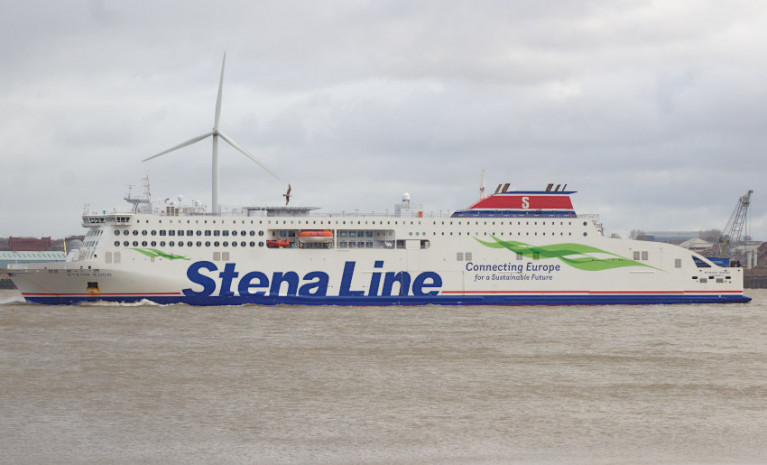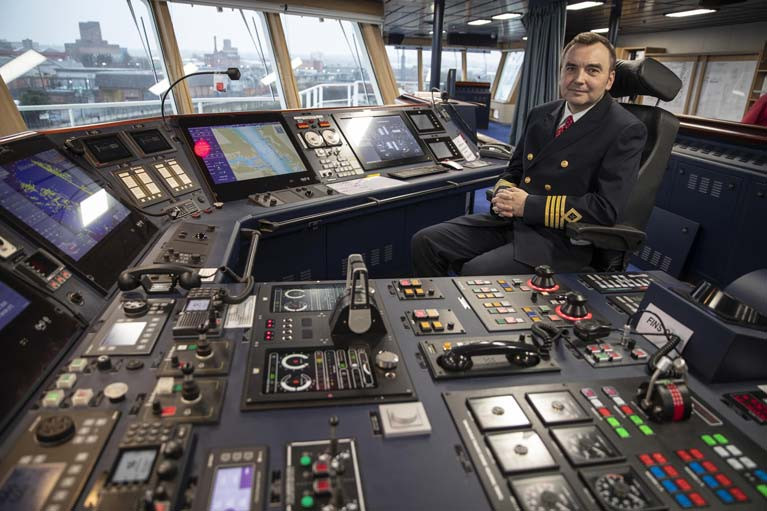Displaying items by tag: Stena Edda
A cargo vessel skipper who nearly caused a collision with a Stena Line passenger ferry in Belfast Lough has been fined more than £6,000, as BBC News reports.
Southampton Magistrates’ Court heard that 64-year-old Kolapi Utime was captain of the Scot Leader when he turned the 90m vessel in front of the Stena Edda during the incident in March this year.
The cargo ship captain then requested that the ferry alter its course to port, which the UK’s Maritime and Coastguard Agency said was “contrary to good seamanship and collision avoidance”.
BBC News has more on the story HERE.
A child has been airlifted to hospital in Liverpool from a ferry in the Irish Sea after what’s been described as a “serious medical emergency”.
The Irish Mirror reports on the incident in the early hours of yesterday (Wednesday 17 March) in which the youngster was taken ill on board the Stena Line vessel Stena Edda near the Isle of Man, while en route from Liverpool to Belfast.
Belfast Coastguard coordinated the emergency medevac response which saw the search and rescue helicopter from Caernarfon in Wales attend and airlift the child and three family members to Alder Hey Children’s Hospital.
Stena Edda Goes into Service with Maiden Voyage on the Irish Sea
The next generation of ferry travel went into service yesterday evening as Stena Line reaffirmed its commitment to operations on the Irish Sea and providing the ‘very best freight and travel experience for customers’.
As Afloat reported previously, Stena Edda, the biggest ferry ever to sail on the Belfast to Liverpool route, embarked on its maiden voyage on Monday evening as it left Merseyside amid a host of celebrations which included a spectacular countdown light show.
With 40% more deck capacity, 40% more cabins and 30% more fuel-efficient than current vessels on the route, Edda accommodates up to 1,000 passengers, 120 cars in its dedicated garage deck and 3,100 lane metres of freight.
Redefining ferry travel on the Irish Sea, Edda is more spacious than previous vessels on the route with a Sky Bar and Scandinavian design providing new levels of comfort for both freight and travel guests.
The vessel also offers greater panoramic views as well as digitally enhanced customer experiences.
Despite the 215 metres length of the ferry, the new port infrastructure in Belfast and Birkenhead will deliver easier and faster loading and unloading for all passengers.
Stena Edda is part of an investment of over £200million by Stena Line in three new vessels and port upgrades, involving the company’s partners at Peel Ports and Belfast Harbour. Edda is the first of two new ferries that will offer a choice of daily sailings on the popular Belfast to Liverpool route.
The multi-million-pound vessel represents over six years planning and construction work, including design development in Sweden to reflect Stena Line’s Swedish heritage.
#ferries - Operator Stena Line has achieved another major milestone in its fleet investment program with the ‘float out’ ceremony of the second vessel in its next generation E-Flexer series.
The second vessel will be named Stena Edda* and follows the Scandinavian heritage decided for the five new vessels that are being constructed at the Avic Weihai Shipyard in China.
Stena Edda is scheduled to enter service on the Belfast-Liverpool route in spring 2020. This is the second of three new E-Flexer vessels bound for the Irish Sea during 2020 and 2021 which represents a significant multi-million pound investment by Stena Line in the region. See related story on the first E-Flexer Stena Estrid to serve Dublin-Holyhead.
The ‘float out’ ceremony of Stena Edda started at 13.18 hrs local Weihai time today (15th April) and at 18.00 Stena Edda floated out of the dock. The timings were chosen especially because 18 is a number associated with good fortune in China.
Stena Line CEO Niclas Mårtensson said: “It’s very exciting to follow the building process and this is another very important milestone in our rolling construction programme. This investment underscores our commitment to our operations on the Irish Sea and our determination to deliver the best possible freight and travel experience for our customers. This is a very exciting time for our business and I’m proud that as Europe’s largest ferry company, Stena Line continues help shape the industry for the next generation of freight and leisure passengers.”
At 215 metres, all three vessels being built for the Irish Sea will be larger than today’s standard RoPax vessels and will provide freight capacity of 3,100 lane meters and the space to carry 120 cars and 1,000 passengers and crew. For the Belfast – Liverpool route capacity will increase by almost 20% compared to the current vessels in service. The next generation vessels have been designed in line with the Stena Line strategic commitment to sustainability and will be highly fuel efficient to help reduce emissions. The vessels will also feature a digitally enhanced customer experience.
“Stena Edda will deliver many benefits to our freight and travel customers including faster and easier loading/unloading with drive through decks and new port infrastructures. Our latest design in cabins and further enhancement of our Scandinavian inspired interiors will make these new ships the largest, most spacious and most comfortable ever to sail between Belfast and Liverpool,” said Paul Grant, Stena Line’s Trade Director, Irish Sea North.
In addition to the three Irish Sea bound E-Flexer vessels, Stena Line has also ordered a further two E-Flexer RoPax vessels with a larger design, to be deployed within Stena Line’s network in 2022. These larger ships will be 240 meters long with a total freight capacity of 3,600 lane meters, and passenger capacity of 1,200. Stena's sister company Stena RoRo is managing all the E-Flexer building projects that are ongoing on Avic Weihai Shipyard.
*Stena Edda - the Edda is an old Norse term that refers to a central medieval collection of poems and divine mythology.






























































